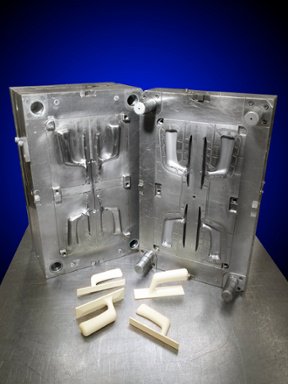Seven hundred pounds of hardened stainless steel. That’s the average weight of an injection mold. Some can weigh over a ton, some just a few hundred pounds, but any way you slice it, you certainly wouldn’t want one to fall on your foot.
So how do you get this massive piece of metal to produce intricate plastic parts? It’s all in the tooling. Using CNC EDM machines to create the base of the mold cavitations, it is the work of the tool maker to refine the steel to exact specifications.
Precision work on the cavities is only part of the equation. The tool must also include gating to allow for proper melt flow and vents to allow gas and air to escape. Without the proper placement of these key features, parts will be subject to imperfections.

If you are working with a turnkey plastic injection molder, they will test the mold cavities to uncover any flaws in the design or the tooling. This important step can help save thousands of dollars in re-tooling costs.
Our eBook reviews the four key factors that go into making a perfect plastic part. Tool design and building is step two in the process.
First, the part must be designed for manufacturability. The right resins for the application must be selected. The final phase, manufacturing of the part depends on getting the right type and size press. Proper press size is the key to minimizing the price per piece cost









Comments